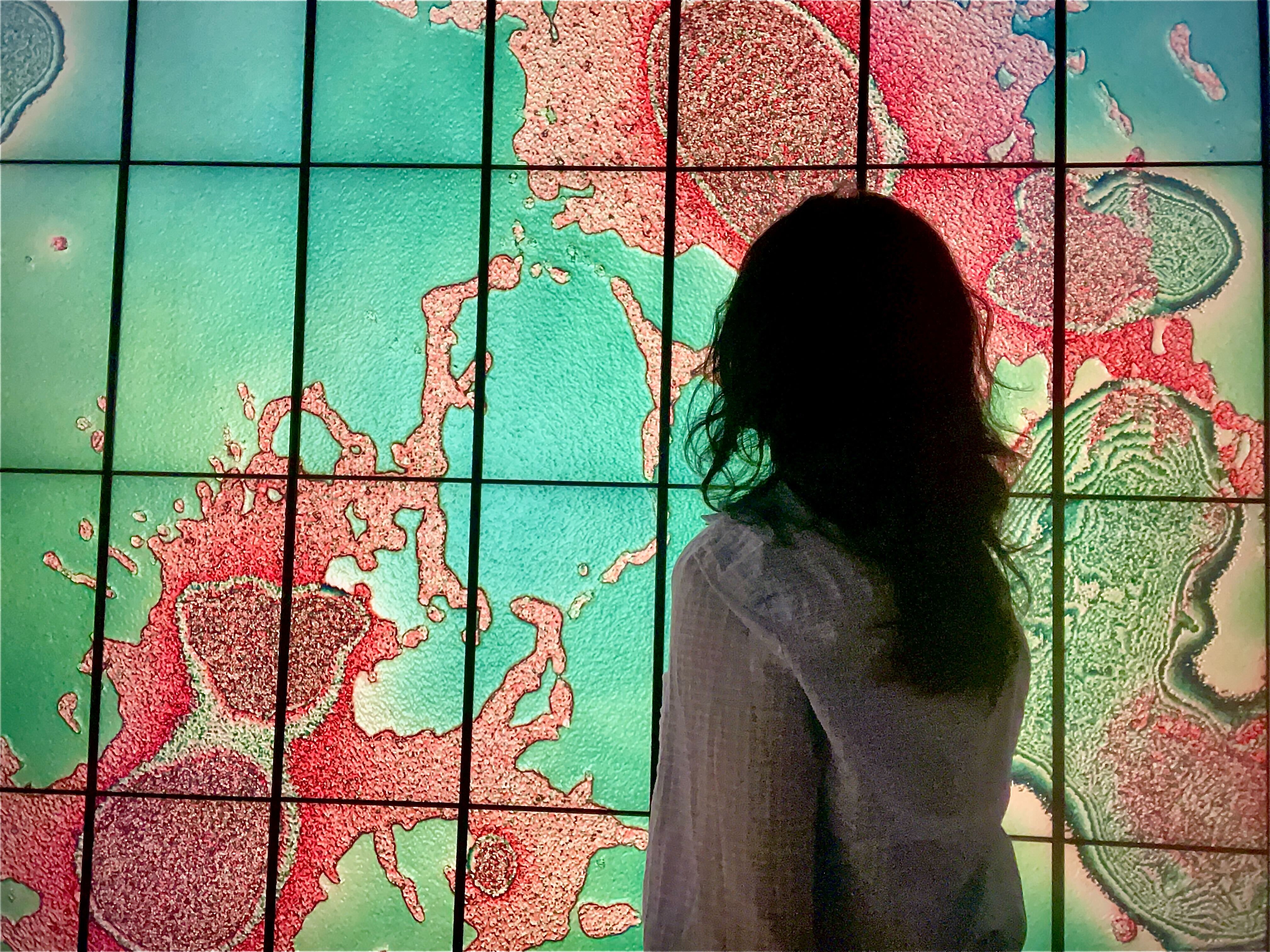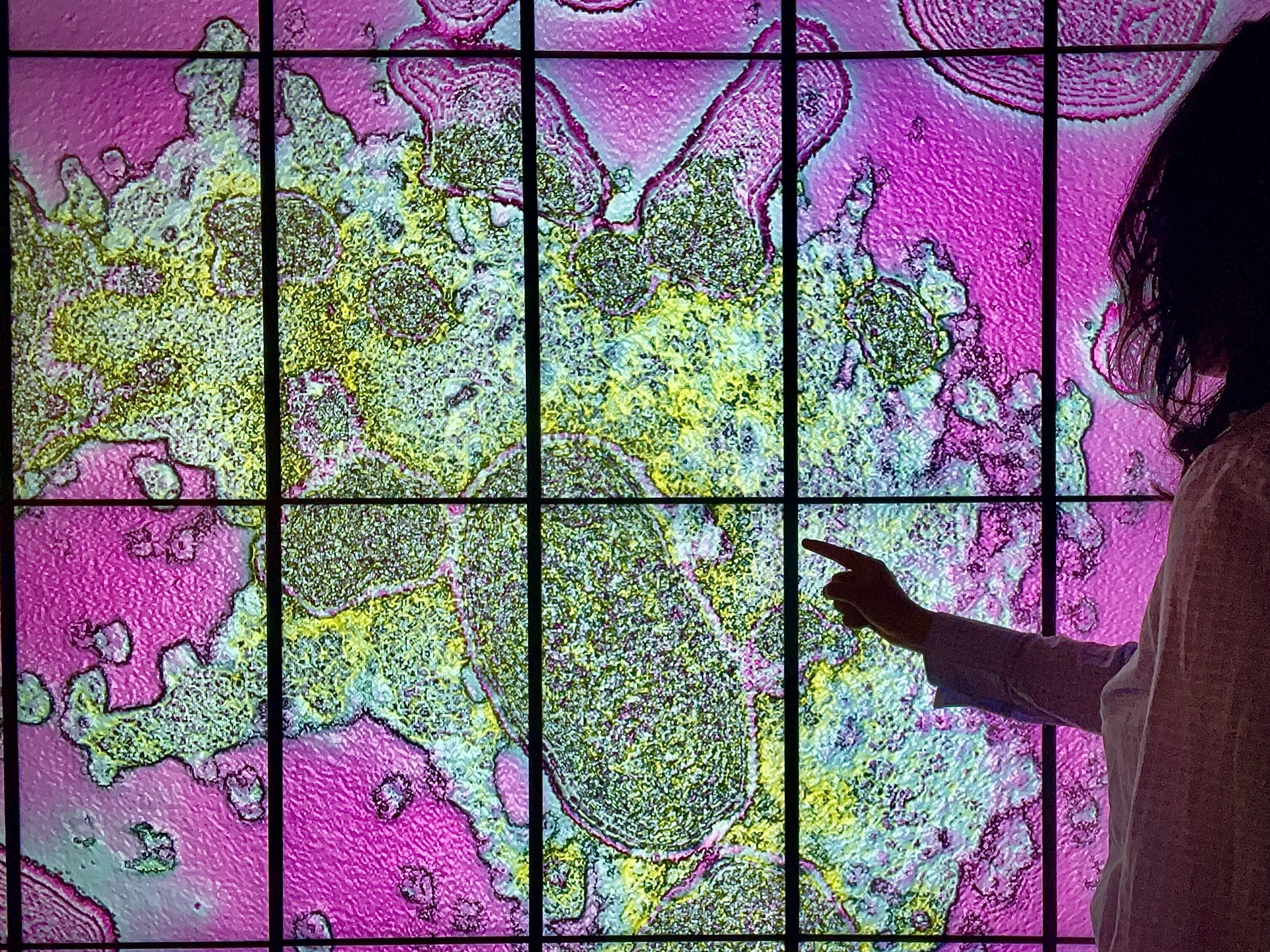Large wall displays (LWDs) can achieve resolutions that are traditionally unattainable with standard desktop setups. Stereoscopic facilities offering gigapixel resolutions have also been developed, pushing these limits even further (Boorboor et al., 2025). Moreover, the large spatial dimensions and extensive screen real estate of such facilities have been shown to enhance human perception and cognition.
Therefore, it is essential to explore the potential of these facilities in advancing scientific and medical analyses. This project aims to address that objective. By implementing volumetric rendering techniques tailored specifically for LWDs - considering their display configurations, multi-node distributed architectures, and unique interactivity requirements - this work seeks to evaluate their usability for scientific volumetric analysis.
Volume renderings of proteins captured using electron microscopy, displayed on the LWD facility FlexiCAVE
(Aamir et al., 2025).
To enable interactive exploration of the volume, we have designed a novel web based frontend, which allows all of exploration, slicing and transfer function editing.
Using the frontend on a handheld device within the LWD facility Silo.
References
2025
-
Silo: Half-Gigapixel Cylindrical Stereoscopic Immersive Display
Saeed* Boorboor, Doris* Gutiérrez-Rosales, Ahamed Shoaib, and 5 more authors
2025
We present the design and construction of the Silo, a fully immersive stereoscopic cylindrical tiled-display visualization facility. Comprising 168 high-density LCD displays, the facility provides an ultra-high-resolution image of 619 million pixels, and close to 360 horizontal field-of-regards (FoR), aiming to maximize visual acuity and completely engage the human visual sensorium and its periphery. In this article, we outline the motivations, design principles, hardware selection and software systems, and interaction modalities used in constructing the Silo. To address missing visual information due to the absence of a ceiling and floor, we have designed a method that utilizes conformal mapping and optimal mass transport to reproject the entire 360 volumetric FoR of the virtual scene to the available display real estate. We showcase several applications demonstrating the utility of the Silo and report the findings of our user studies that highlight the effectiveness of the Silo layout compared to curved mono and flat powerwall display facilities. Our user evaluations and studies have shown that the Silo supports natural exploration and enhanced visualization due to its capability to render surround ultra-high-resolution stereoscopic views.
-
FlexiCAVE: A Dynamically Configurable High-Resolution Display Facility *
Zainab Aamir, Saeed Boorboor, Ahamed Shoaib, and 2 more authors
2025
Large high-resolution displays (LHRDs) have become essential tools in visualization and visual analytics, providing expansive and flexible visualization spaces and supporting simultaneous details and context and intuitive physical navigation for data exploration. Despite significant advancements in display technology, particularly regarding display resolution and form factors, a persistent challenge has been determining optimal display configurations for diverse analytical tasks. This has motivated us to design and construct the FlexiCAVE, a novel LHRD facility uniquely designed with rotatable display columns, enabling dynamic horizontal curvature adjustments. Comprising forty high-pixel-density displays arranged across ten columns, the FlexiCAVE offers an active stereo system with a total resolution of approximately 83 million pixels, and the columns can rotate inward up to 90° per hinge. Unlike existing static or single-configuration curved displays, the FlexiCAVE dynamically adapts its curvature in real-time, supported by our custom-developed rendering engine that synchronizes camera views with the changing display layouts. To demonstrate the utility of the FlexiCAVE, we present several application scenarios showcasing the facility significance and flexibility, including interactive radial slicing in volume rendering through physical column rotation and the dynamic switching between multivariate plots. With its adaptability and innovative design, we believe that FlexiCAVE represents the next generation in LHRD technology, setting new standards and design spaces for future large data visual systems.



